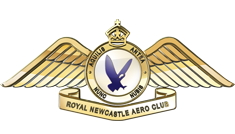The airfield consists of two sealed and one grass runway which provide sufficient take-off and landing directions to allow circuit training to be conducted for most situations on any day. The information listed below shows the basic layout of the aerodrome known as Russell Field in Maitland – Royal Newcastle Aero Club.
The sealed runway directions are 05/23 and 08/26.
Russell Field is defined as a Certified Aerodrome.
RNAC does NOT have operational control of every aircraft that visits the airfield, however, operations are expected to comply with the following standards:
Circuits at Russell Field Maitland are conducted in accordance with Australian standard aerodrome operational practices.
Night circuits are conducted on either Runway 05 or Runway 23. All night circuits must be conducted on the southeastern side of the airport (i.e. a left circuit on runway 23, a right circuit on runway 05) to avoid high terrain to the north.
As the owners of the airfield, RNAC reserves the right to vary the above standards during pilot training in order to meet the requirements of the Clubs approved Flying Training Syllabus which includes the need for a pilot to be trained in right hand circuits, low level circuits, glide approaches.
NOTE:
Pilots are also advised to read, understand & agree to the “Community Operational Undertaking” (COU) which imposes additional limitations that RNAC and Maitland City Council have agreed to.
Pilots are requested to maintain the extended runway centre line on approach to land & during takeoff for at least 500 metres from the aerodrome boundary (NOT THE THRESHOLD). This and other limitations are a requirement for all pilots to share in the responsibility to reduce the environmental impact on the surrounding community.

Please select a template first
